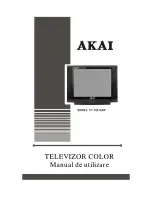
Cabling Types
11-3
FDDI Media
The UTP cable used in network installations is the same type of cable used in the
installation of telephone lines within buildings. UTP cabling is differentiated by
the quality category of the cable itself, which is an indicator of the type and
quality of wire used and the number of times the wires are twisted around each
other per foot. The categories range from Category 1 to Category 5, with Category
5 cabling being of the highest quality.
The wires that make up a length of UTP cable are numbered and color coded.
These color codes allow the installer of the networking cable to determine which
wires are connected to the pins of the RJ45 ports or patch panels. The numbering
of the wires in EIA/TIA standard cables is based on the color of the insulating
jacket that surrounds the core of each wire.
The association of pairs of wire within the UTP cable jacket are decided by the
specifications to which the cable is built. There are two main EIA/TIA
specifications in use around the world for the production of UTP cabling;
EIA/TIA 568A and the EIA/TIA 568B. The two wiring standards are different
from one another in the way that the wires are associated with one another at the
connectors.
Since the FDDI Twisted Pair - Physical Medium Dependent (TP-PMD)
specification requires the use of all eight wires in a four-pair cable, the EIA/TIA
specification to which the cable is constructed is of prime importance. The
arrangement of the wires and pairs in the EIA/TIA 568 specifications is discussed
in the UTP portion of the Connector Types section of this chapter.
Keep in mind that the selection of an EIA/TIA wiring scheme will determine the
characteristics of Wallplates, Patch Panels, and other UTP interconnect hardware
you add to the network. Most manufacturers supply hardware built to both of
these specifications.
Crossovers
As all connectors in the FDDI TP-PMD specification are organized in the same
fashion with regard to pinouts, the FDDI TP-PMD specification requires UTP
connections between TP-PMD devices be crossed over. Crossing over is the
reversal of the transmit and receive pairs at opposite ends of a single cable. Each
cable that swaps the location of the transmit and receive pairs at only one end is
called a crossover cable. Those cables that maintain the same location for transmit
and receive pairs at both ends are called straight-through cables.
If two TP-PMD devices are connected using a straight-through cable, the transmit
pins of one device will be connected to the transmit pins of the other device. In
effect, the two devices will both attempt to transmit on the same pair of the cable
between them. This will cause the FDDI ring to wrap.
NOTE
TP-PMD Specifications limit the use of UTP cabling to Single
Attached Station connections from FDDI concentrators to
stations (M ports to S ports).
Summary of Contents for 100BASE-FX
Page 1: ...Cabletron Systems Cabling Guide...
Page 2: ......
Page 4: ...Notice ii...
Page 22: ...Cabling Terms 2 8 Test Characteristics...
Page 54: ...Ethernet Media 4 30 Connector Types...
Page 72: ...Full Duplex Ethernet Network Requirements 6 8 Ethernet FOIRL Single Mode...
Page 80: ...Fast Ethernet Network Requirements 7 8 Hybrid Installations...
Page 130: ...FDDI Media 11 16 Connector Types...
Page 136: ...FDDI Network Requirements 12 6 TP PMD STP...
Page 170: ...Connecting and Terminating 14 20 FDDI...
Page 192: ...Index 4...
















































